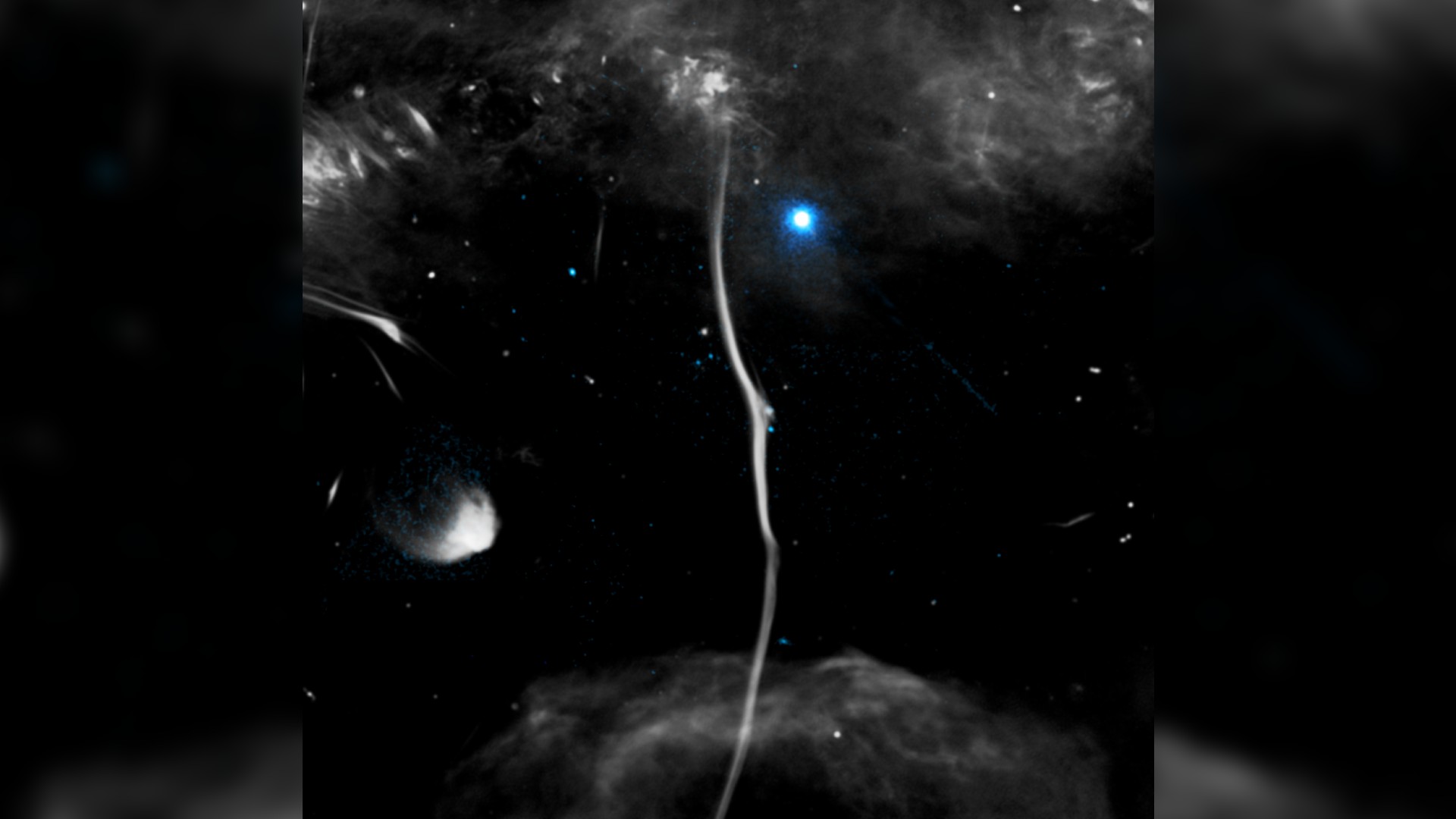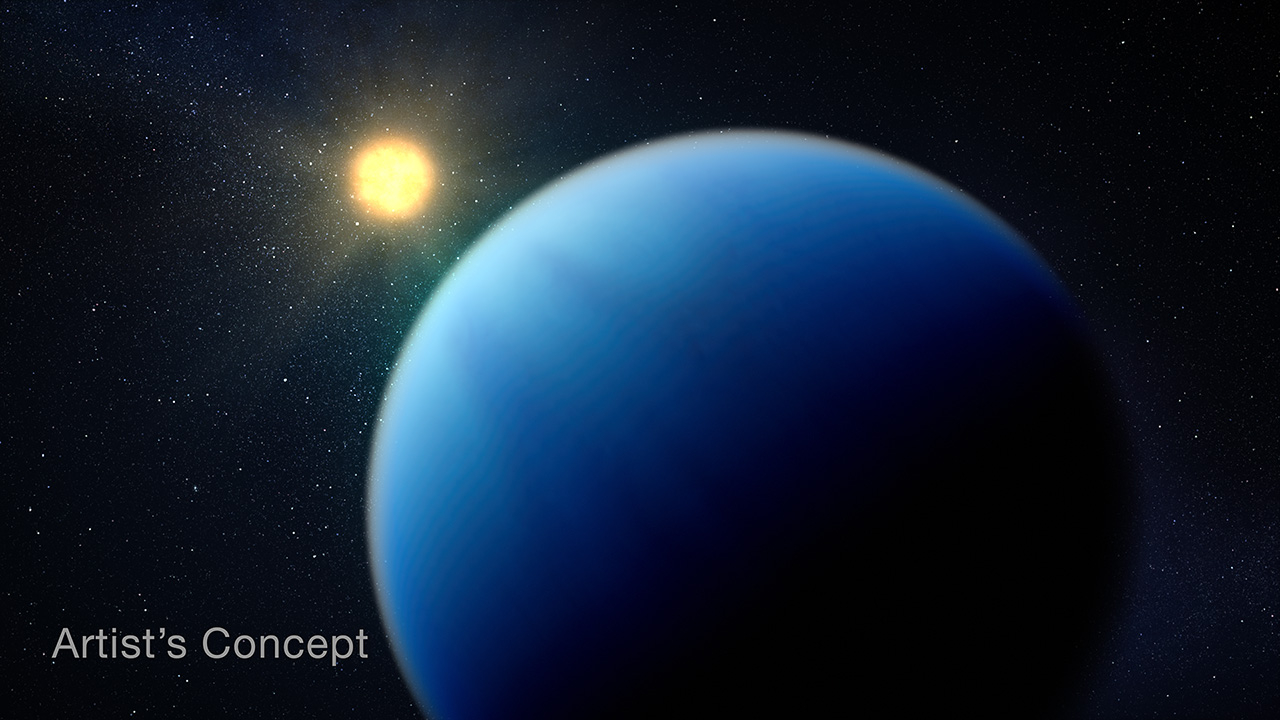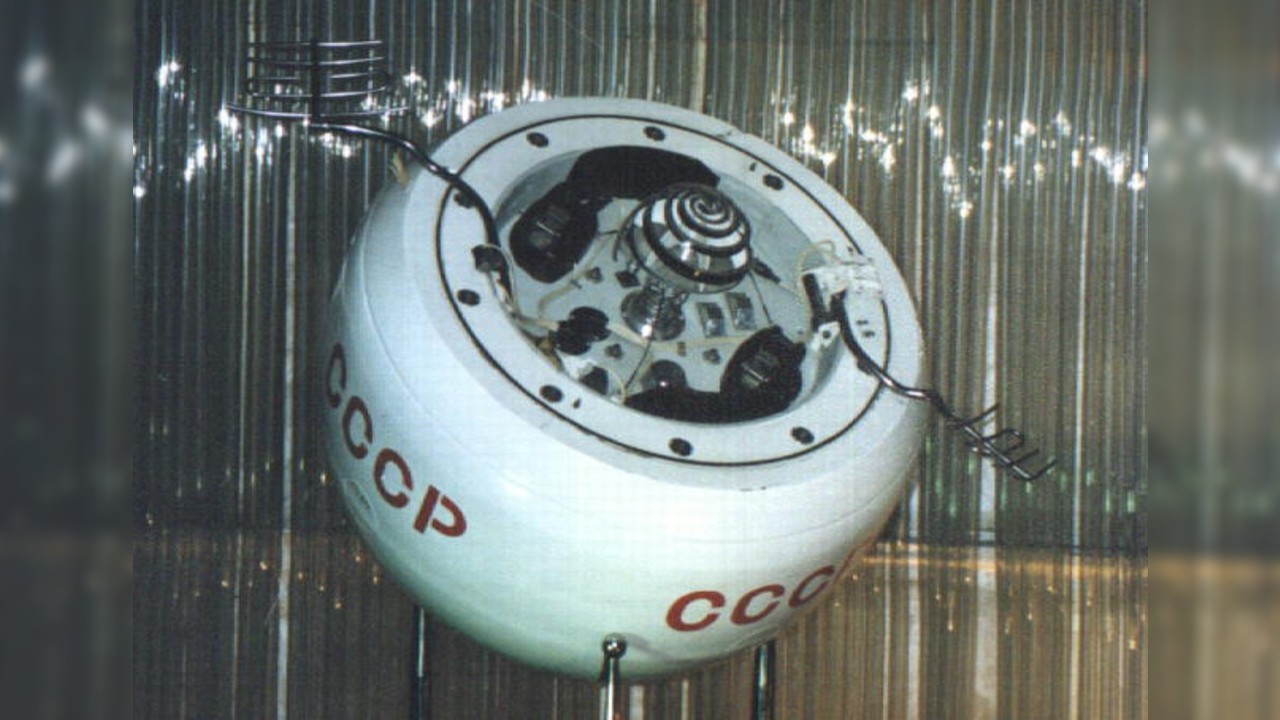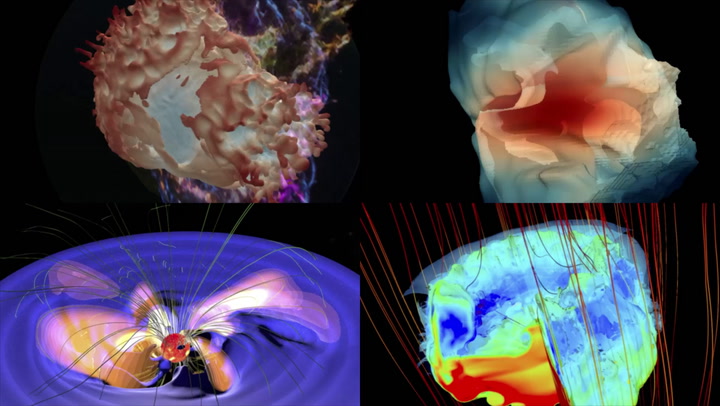NASA's Chandra Space Telescope Captures the Tempest in a Cosmic 'Teacup'
A powerful quasar has caused a raging storm in a distant cosmic structure known as the "Teacup."
The quasar, which is powered by a supermassive black hole, is located at the center of a distant galaxy about 1.1 billion light-years from Earth. The galaxy, formally known as SDSS 1430+1339, hosts a teacup-shaped structure, in which the quasar is brewing.
Quasars are among some of the brightest and most distant objects known in the universe. They are found only in galaxies with supermassive black holes, which gobble up matter near the galactic core and emit extreme amounts of radiation, according to a statement from NASA.

The signature "handle" of the Teacup lies 30,000 light-years from the black hole. This structure is believed to be a ring of galactic material surrounding a giant "bubble," and was likely formed by one or more eruptions powered by the black hole, according to the statement.
Radiation from the black hole can cause high-speed galactic winds, also known as jets, to shoot out from either side of the quasar. These powerful jets likely blew a ring of galactic material into space, creating the "bubble" found inside the handle of the Teacup, according to the statement.
Using NASA's Chandra X-ray Observatory, astronomers have been able to learn more about the evolution of the black hole and how its behavior has changed over time.
Previous studies suggested that the quasar was rapidly dying out. However, the new data from Chandra shows that the quasar is producing much more radiation than scientists previously thought, according to a 2018 study published in the Astrophysical Journal Letters.
Get the Space.com Newsletter
Breaking space news, the latest updates on rocket launches, skywatching events and more!
The Chandra data also revealed that the quasar is heavily obscured by gas, which likely obstructed the view of optical telescopes used to study the structure in 2007. At the time, the clouds of gas could have prevented astronomers from detecting all the radiation emitted by the quasar, thus leading them to believe the structure was quickly fading away.
The X-ray data from Chandra was combined with images from NASA's Hubble Space Telescope to create the stunning new view of the Teacup structure.
- The Brightest Quasar of the Early Universe Shines with the Light of 600 Trillion Suns
- Behold the Mighty Quasar: The Science Behind These Galactic Lighthouses
- Cosmic Bat Nebula Photographed by ESO's Very Large Telescope
Follow Samantha Mathewson @Sam_Ashley13. Follow us on Twitter @Spacedotcom and on Facebook.
Join our Space Forums to keep talking space on the latest missions, night sky and more! And if you have a news tip, correction or comment, let us know at: community@space.com.

Samantha Mathewson joined Space.com as an intern in the summer of 2016. She received a B.A. in Journalism and Environmental Science at the University of New Haven, in Connecticut. Previously, her work has been published in Nature World News. When not writing or reading about science, Samantha enjoys traveling to new places and taking photos! You can follow her on Twitter @Sam_Ashley13.









